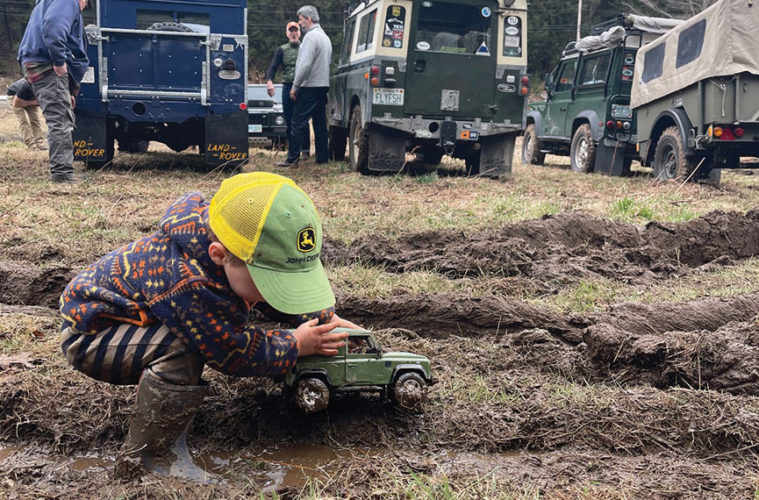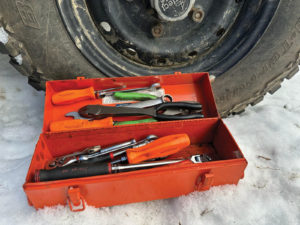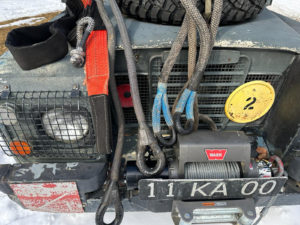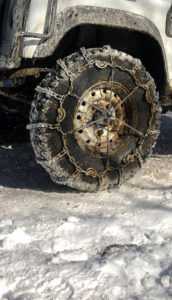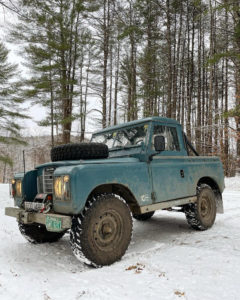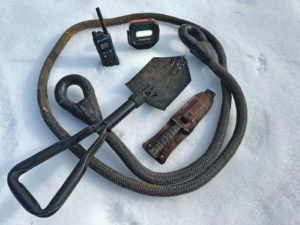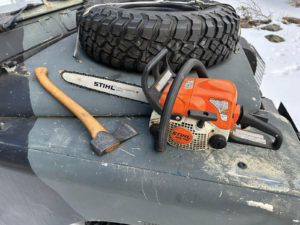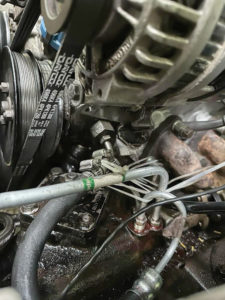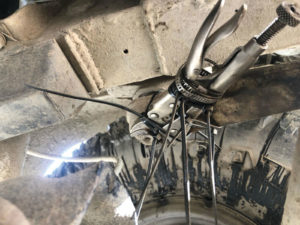As this issue goes to press, Vermont enters it unofficial, but very real, fifth season, known as Mud Season. Over 55% of our official town roads lack pavement, which leaves us with 8,700 miles of dirt roads. For eleven months out of the year, those dirt roads smooth out into a hard, packed surface like that of an interstate highway. They’re often smoother than paved roads – until the winter thaw creeps in. Sometime, beginning in early April and continuing into May, it can be quite challenging to travel on many of Vermont’s dirt roads. You’d think you were driving through a foot of chocolate pudding. I have friends that live out in the woods; during mud season, they have to think about alternate routes to get home due to the massive ruts that become gouged into the thick mud. That said, driving a Land Rover during mud season boosts one’s confidence even when driving conditions become a challenge.
Whether it’s late winter or mud season, certain gear can help you through the snow, muck and mire. I drove my Series III 88” across three states to enjoy the Maine Winter Romp. I knew it would be cold outside – as well as chilly inside – so I carried recovery gear, repair tools and additional warm clothing.
Whatever the season, I strongly recommend a run-through of all the general maintenance items before a trip: tire pressures, fluid levels and all the standard visuals. Getting there and back should not become an unplanned battle; having the basics covered should help tremendously. At all times, I carry a tool kit with basic socket sizes, wrenches, standard screwdrivers, pliers, etc. For longer trips, I also include a quart of motor oil and a quart of gear oil. Bringing a can of brake or carburetor cleaner can’t hurt, because a clogged carb can mean a poorly running motor (and cleaning in the field is occasionally required). Better to have it and not need it, than to need it and not have it.
Snow and mud driving present similar off-road challenges due to the unpredictability of what lies beneath the surface and how the vehicle reacts to the snow, ice or mud. Of course, the driver has a lot to do with control, but sometimes even the most experienced driver will run into problems. The easiest way to maintain winter trail control is through the use of tire chains. There are several brands available on the market and most will get you down the trail safely. They may look intimidating to put on, but they are easier than they look. Always remember to remove the chains once you come out of the woods and hit dry roads again. Leaving them on will cause damage to the chains themselves and possibly the vehicle if chain links break.
I rely on my winch as my second key bit of kit. It’s never a good idea to off-road alone, but if you do, a winch can provide an insurance policy to get you home. I can think of quite a few occasions where I’ve gone out into the woods and if I didn’t have a winch, it could have ended very badly. Once, while living in Newfoundland, a buddy and I explored some World War II-era U.S. Navy bunkers on a remote, coastal cliff. The hillside around the installation was scarred with a maze of single-track gravel pathways. The truck I was driving started sliding sideways uncontrollably across the path. I didn’t realize that there was a water run-off from the adjacent hill that created a layer of thick ice across the snow-covered road. The passenger side rear wheel completely slid off the road, dangling loosely over a twenty-five-foot drop. I was terrified that the whole truck would tumble over the embankment. I carefully got out and retrieved a tow rope from the back of the truck and lashed one end around the driver’s side rear wheel and the other around a small tree. At least that would keep the rear from going further over the edge. I then unspooled the winch cable, dragged it beyond where the ice had covered the trail and fastened it to another tree. I got back in the driver seat and slowly started spooling in the winch cable while my buddy released the rope that I had tied to the rear of the truck. Everything went smoothly with no damage to the vehicle, but without the winch, it would have been a different story. This occurred in the days before cellphones, in the middle of nowhere.
To accompany the winch, carry a tree strap to attach the winch cable to so that you avoid damaging the trees. An extra tow rope to extend the reach of the winch cable, and hard or soft shackles should be a part of your kit. (I prefer the synthetic kinetic rope shackles. If they break, which is unlikely, they won’t come hurtling towards you, but instead will fall to the ground.) Always wear gloves when winching, especially when using wire cable, and have a blanket or jacket to throw over the winch line.
I also like to carry a small shovel in case I need to dig out around a vehicle’s recovery point or wheel. It’s good to have a radio installed to stay in contact with others in your group in the event of an emergency; I recommend GMRS hand-held radios for their range and portability. When you find a trail blocked by a fallen limb or tree, you’ll be happy you carried a bow saw, axe or preferably a chainsaw. Once, off-roading alone on a Class 4 trail near my house, I came upon a downed tree laying directly across the path. The trail narrowed down to a single track with rock obstacles; backing up or turning around weren’t really options. With the help of my chainsaw, I was able to clear the tree in a matter of minutes and be on my way. Ratchet straps come in handy when a bonnet or door latch gets smashed and will not close properly. A Hi-Lift style jack can raise the vehicle when effecting a repair, lift a corner to help stuff something
underneath a wheel, or be used as a come-along in a pinch. Always be mindful of daylight, but in the event that you break down in the woods after dark, a light source will definitely make the job easier. Thankfully this hasn’t happened to me (yet), but should you become stranded, pack snacks, water and an extra wool jacket and blanket.
Finally, zip ties – don’t leave home without them. In an emergency, channel your inner MacGyver and let the common zip tie be a life saver. I once used them to secure my exhaust system when the hanger failed, leaving the entire length of pipe and muffler pounding on the top of the rear axle. Three zip ties and a piece of leather held the whole thing in place. Last summer, while traversing Old Florida Road in Western Massachusetts with Rob Wollschlager, we ran into a major issue with the power steering on his Range Rover Classic. The high-pressure line from the power steering pump blew, spraying fluid all over the motor. The replacement hose would not stay attached to the pump and kept popping off, so we used several zip ties to apply pressure to the lines. This backyard trail fix got Rob all the way back home to Connecticut. But wait – there’s more: Mike Kenney had traveled deep into the North Maine Woods when he lost the nut that secured the pitman arm to the steering column on his Series IIA. With no parts to complete the job, he used vice grips and zip ties to hold the steering arm in place. It got him out of the woods and held for the eighty-eight miles to Ashland, ME, where he was able to buy a replacement nut and Loctite at a local auto supply store.
On any budget, you can outfit yourself and your Land Rover with many accessories to keep yourself safe and make the drive a little more fun. With just a little prep, you can create a checklist to follow so that you don’t forget the essentials. That said, I admit to countless occasions when I made mental notes of what to pack in the Series III during mud season, only to leave those items behind in my mud room.
[For more information on the Maine Winter Romp or other east coast events, contact VermontRovers@gmail.com @vermontrovers -ed.]
